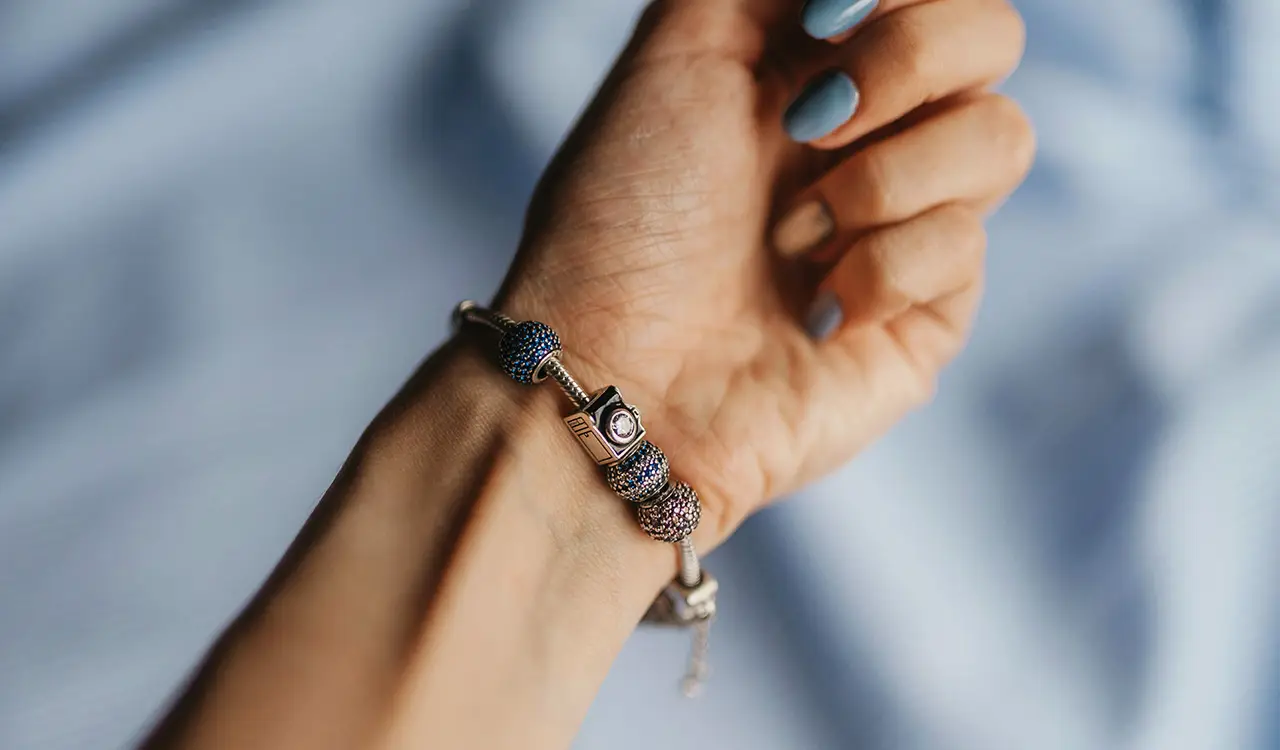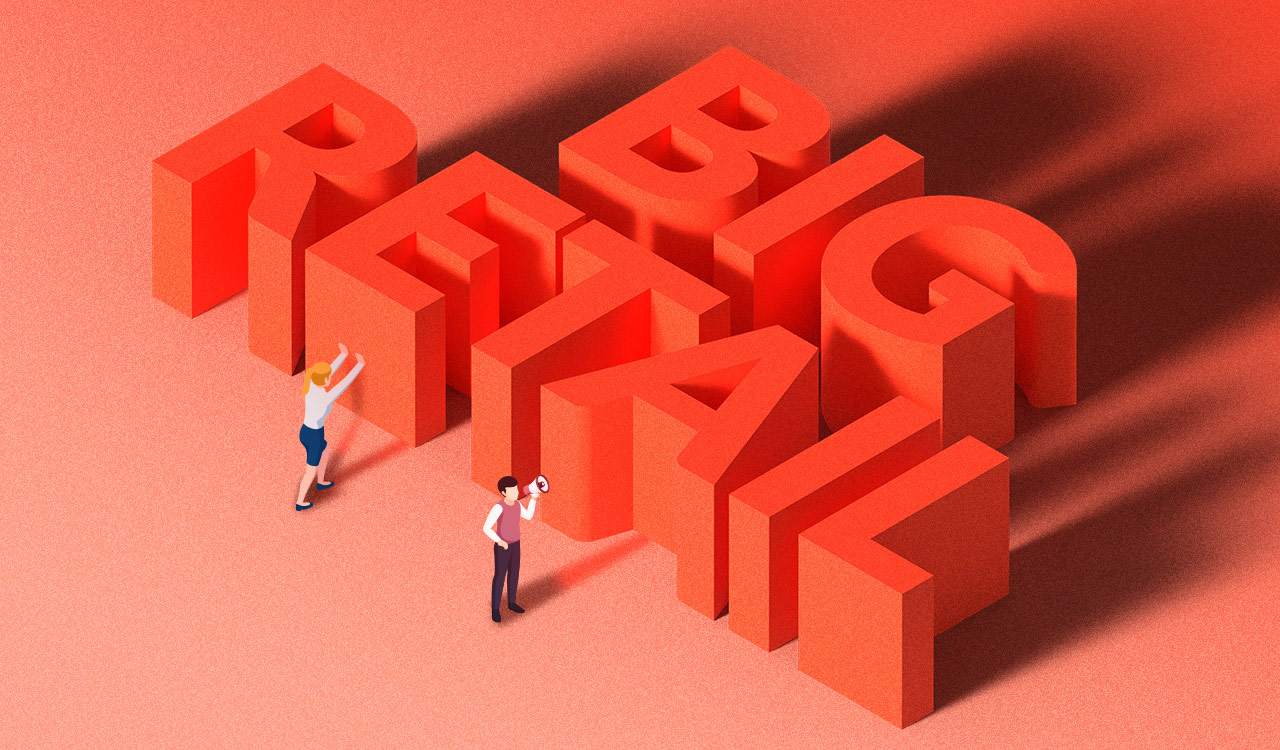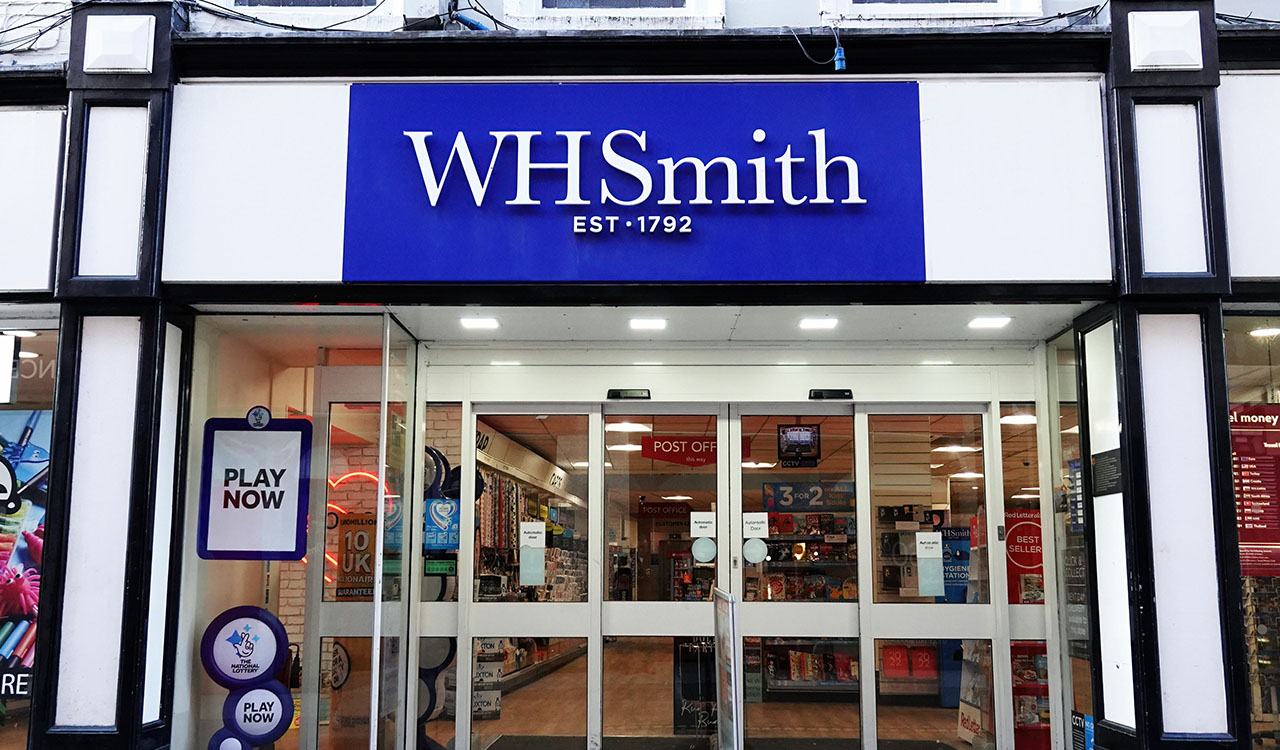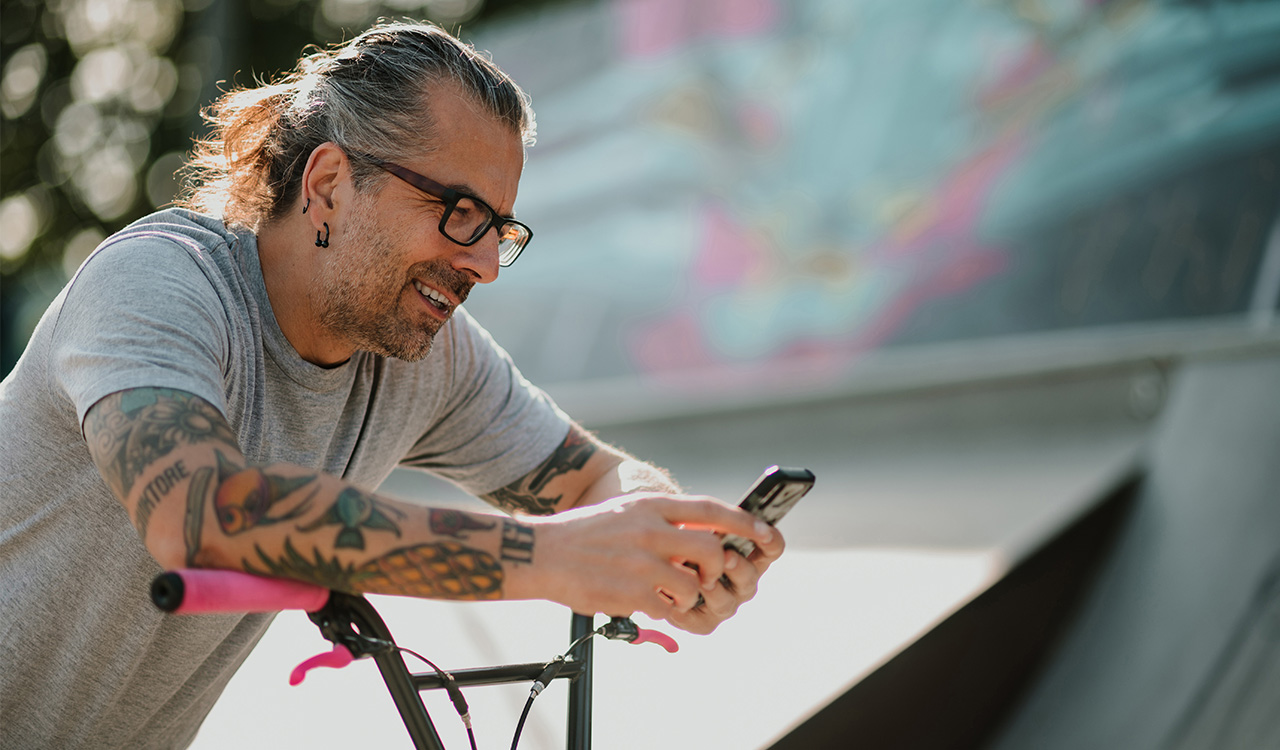Pandora, known for its iconic charm bracelets and the world’s largest jewelry company by volume, is now using 100% recycled gold and silver in its products, way ahead of its goal to go full-on recycled by 2025. The shift to recycled metals avoids 58,000 tonnes of CO2 emissions – the slightly larger metric equivalent to a ton – and equal to the annual electricity usage of 11,000 homes or driving 6,000 cars around the world.
Following the disruption of the pandemic, Lacik implemented a strategic plan called Phoenix. “As the myth tells us, the phoenix bird possesses superpowers, most notably the ability to heal itself from any wound and emerge stronger and more beautiful. The phoenix bird is a primal symbol of change,” he explained. “Our Phoenix strategy was a response to some failings in the past, and I’m pleased to report that the strategy is serving us very well.”
Everyone benefits from this shift because precious metals can be endlessly recycled without any loss of quality. “Silver originally mined centuries ago is just as good as new,” Pandora CEO Alexander Lacik said. Unfortunately, the rest of the jewelry industry has much catching up to do, since less than 20 percent of the industry’s silver supply comes from recycled sources, the public-benefit corporation Sustainable Brands estimates.
Pandora is Raising the Bar
Pandora’s path to sustainability began in earnest in 2020, when it set the goal to use only recycled metals by 2025. In 2021 it shifted from mined to lab-grown diamonds as an environmentally better alternative. Then in 2022, it joined the Watch and Jewellery Initiative 2030, which is dedicated to building climate resilience in the jewelry supply chain to ensure the industry’s sourcing is inclusive and positively impacts nature and communities.
While other jewelry brands have started to incorporate some recycled metals into their products, none are of the size or scale of Pandora. And their efforts in that direction can be hampered by the supply-chain sources that offer so-called “recycled” metals. When Pandora decided to go fully recycled, they investigated their existing suppliers and found that in some cases about one-fourth of the mix was virgin grain. It required Pandora to rework their supply chain to assure suppliers fully complied with its requirement for 100 percent recycled metals.
In guiding the company’s sustainability mission, Lacik follows a biblical admonition, “To whom much is given, much will be required.” Lacik explained, “Given the sheer size of Pandora – we reach a lot of consumers and have all kinds of stakeholders, be it governments, NGOs, financials, our employee base – we have an opportunity to be a good role model because of our platform, size and scale. We want to share best practices. I have zero concerns about being completely transparent in this space. Our responsibility is to be a good corporate citizen.”
Those efforts reached a crescendo last September when Lacik addressed the United Nations General Assembly in New York to discuss the company’s sustainable development goals and steps the company is taking to become a low-carbon, circular, inclusive, diverse and fair business.
Leading the jewelry industry in ESG is only a small part of Pandora’s sustainability story. What matters most is how it’s built a sustainable business amid economic turbulence that can move luxury purchases such as jewelry to the bottom of consumers’ priority lists.
Unlikely Jewelry Company Leader
Since Pandora went public in 2010, it’s been a revolving door for leadership, shuffling through five CEOs before Lacik arrived in early 2019. In a case of unfortunate timing, he got the career challenge of a lifetime when the Covid pandemic hit the next year. He had CEO experience after serving a year with Britax, a child safety products business but had no direct experience in the jewelry industry. Prior to Britax, he was with CPG giants Reckitt Benckiser, rising to president in North America, and Proctor and Gamble in various sales and marketing positions.
Copenhagen-based Pandora was a welcome Scandinavian homecoming for him as a Swedish citizen having lived in five different countries throughout his career. In another challenge at the time of his arrival, Pandora had hit a rough patch. After growing at an astounding 20.4 percent compound annual growth rate (CAGR) from 2013 through 2017, from $1.3 billion (DKK 9.0 billion) to $3.3 billion (DKK 22.8 billion), revenues were flat in 2018. Then they dropped 4 percent in 2019 to $3.2 billion (DKK 21.9 billion), then another 13 percent in 2020 due to Covid.
Lacik has now restored the company’s fortunes by posting a very respectable 5.1 percent CAGR over the last five years, reaching $4.1 billion (DKK 28.1 billion) in revenues with an EBIT margin of 25 percent. Going forward, he is targeting an ambitious seven-to-nine percent CAGR in organic growth and an EBIT margin improvement between 26-to-27 percent by 2026.
Upon Lacik’s hiring, then chairman of the board Peder Tuborgh said he was a “brilliant marketer and brand architect,” as well as a “great leader and a highly effective executor.” Lacik has proven true to those words.
Rising from the Ashes
Following the disruption of the pandemic, Lacik implemented a strategic plan called Phoenix. “As the myth tells us, the phoenix bird possesses superpowers, most notably the ability to heal itself from any wound and emerge stronger and more beautiful. The phoenix bird is a primal symbol of change,” he explained. “Our Phoenix strategy was a response to some failings in the past, and I’m pleased to report that the strategy is serving us very well.”
The Pheonix strategy has four pillars:
- Brand Identity – Pandora’s challenge was to transform from a charm and bracelet brand to be recognized as a full-service jewelry brand. Its core charm category, Pandora Moments, still accounts for nearly 80 percent of revenue, but as a mature category, its like-for-like growth was only two percent last year.“Core will never have explosive growth the way it used to, but it is still vibrant and key to our brand penetration,” Lacik said, adding that Pandora is the most searched-for jewelry brand on Google – “Four times larger than each of our three largest competitors” – and its branded jewelry searches were up 40 percent last year.
The Pandora ME collection extends Pandora’s core offering beyond charms and bracelets to earrings, necklaces and stackable rings, and its ME sales advanced 12 percent in like-for-like growth. Pandora Timeless full-jewelry collection was another big mover, up 20 percent.
The lab-grown diamond Signature collection was a new addition and got off to a strong start last year after introducing three new collections to the initial 36-piece collection. Signature sales more than doubled last year. “Instantly our run-rate doubled, which goes to show there’s a lot of interest in lab-grown diamonds; we just needed the right assortment,” said Lacik.
Critical to presenting the full jewelry range of Pandora are its branded stores and shop-in-shops, which Lacik reports are profitable within a year of opening. “We are actually a direct-to-consumer business since we directly manage up to 85 percent of all customer transactions.”
- Design – Given the company’s insights into what’s hot and what’s not, combined with being vertically integrated throughout its supply chain, Pandora has its finger on the customer’s pulse when it comes to design. “The success rate of our innovation is our mix of art and science to create beautifully designed jewelry to drive growth,” Lacik said.
This year Pandora will add a new full jewelry Pandora Essence collection, described as inspired by the “organic shapes found in nature.” It was tested in the Netherlands last year with early success warranting expansion into other markets.
The lab-grown diamond Signature collection is also gaining ground, now in 700 stores across North America, UK, and Australia, with selected showings in Mexico and Brazil. By 2026, Pandora expects lab-grown diamonds to generate over $100 million in sales.
While new jewelry designs are key, Pandora has untapped potential in its archive. “Since 2019, we have had a Sun and Moon ring in our assortment. It was an okay performer, but not spectacular,” he related. “Then it was posted on TikTok and wow! In two weeks we sold out and have it set for future delivery, which never really happened before. This means we are tapping into the younger consumer in a very relevant way.”
- Markets – Continued expansion in North America and Latin America is the priority, and to a lesser extent China, which brings in only two percent of revenues and was off by nearly one-fourth in 2023. Globally, the company has identified some 7,000 “viable white space” locations to expand Pandora’s physical store network and it’s taken steps to enter underserved markets like South Korea, Japan and India.Currently, Pandora operates 2,650 concept stores, of which 70 percent are company-owned and operated and it has some 4,000 additional points of sale. Plans are to add 225 to 275 new concept stores from 2024 to 2026 and some 175 to 225 additional shop-in-shop locations.
All new concept stores will follow the Evoke 2.0 model which has proven a better format for self-discovery by presenting the full range of Pandora jewelry offerings. The company aims to convert up to 60 percent of its existing footprint to the Evoke 2.0 model by 2026.
- Personalization – Personalization has been a cornerstone of the Pandora brand from its founding since no two customer charm bracelets are likely ever to be the same. However, it is also leaning into personalizing the customer shopping experience by using its digital insights into the customer journey to enhance in-store operations and implementing more technology in-store to serve customers better. In its move to be a full jewelry retailer, it is adding services such as basic repair, cleaning, and engraving to the mix. It has also rolled out a My Pandora loyalty program in three markets, which will be expanded to all major markets this year.
Jewelry for All
“Our mission has always been to democratize the jewelry space, giving millions of women possibilities to express who they are through our handcrafted jewelry,” Lacik declared. “Our job is to transform the perception of Pandora into a full jewelry brand.” And they are full-on to transform that desire to include recycled gold and silver.
The brand’s new Be Love campaign, headlined by singer-songwriter sisters Chloe and Halle Bailey as ambassadors, is designed to elevate brand desire and introduce the full range of Pandora’s jewelry offerings to younger consumers.
With its expanded ranges and wider offerings, all at affordable price points for fine jewelry crafted from precious metals and materials, Pandora meets two customer needs. There is jewelry as a fashion accessory and jewelry that has special, emotional meaning. It plays in both spaces but claims ownership of the latter. “Our customers come to us primarily to find and compose a unique piece of jewelry that holds a high emotional value to them. It gives the Pandora brand a unique and relevant positioning in the market,” Lacik shared.
“Other brands can copy our products, but they can’t dislodge our point of difference in people’s minds. Pandora owns the space of meaningful jewelry and I would argue that is our most important asset,” he concluded.




